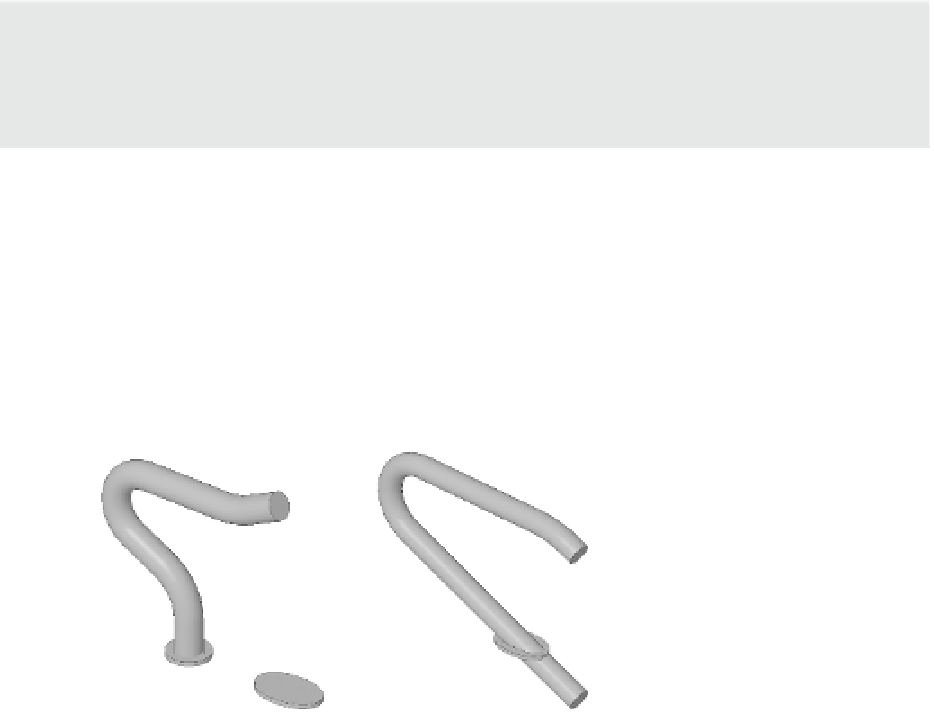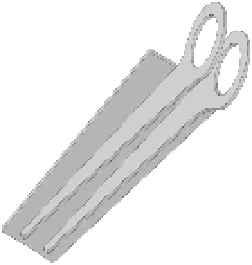Graphics Programs Reference
In-Depth Information
Controlling the Baluster Supports
don't forget to control the number of baluster supports per tread. revit has an easy way to
accomplish this through the railing option Use Baluster Per tread on Stairs, found in the edit
Baluster Placement dialog box.
Once you've begun to experiment with creating balusters as tread supports for stairs, you'll
notice you have options for making more complete and finished conditions.
Start and end posts are useful and can help complete the structure of your custom railing
and baluster system, particularly if you want to properly anchor and connect your custom
stair and railing. The elements shown in Figure 15.40 are the start and end posts to anchor a
custom railing and a baluster that will serve as the tread with integrated support. It builds on
the previous example of using a baluster as a support element for a tread.
Figure 15.40
Custom post and
baluster families
To finish this stair, you need to create start and end posts that anchor the stair. As with the
previous handrail-join exercise, you'll want to model the bulk of the custom stair with the
custom railing. Then you'll export the stair parts for importing into the baluster template (or the
generic model template that will be nested into the baluster template).
Figure 15.41 shows the results after the start and end posts and custom baluster families are
applied to a completed stair design.
When it all comes together, the results can be elegant and interesting. All of this is available
through the default Stairs tool. You can download this stair from the Chapter 15 folder on the
book's companion website; it's called c15-Tube Stair.rvt.
Now let's go one step further. There's no reason that the baluster support element needs to
exactly conform to the shape of the tread. And there's no reason that the support element can't
contain the actual baluster that is intended to support the handrail.
Take a look at the support element in Figure 15.42. Not only does it contain the support
element, but the support element has been modeled to exceed the shape of the tread that will be
modeled by the Stairs tool.


















